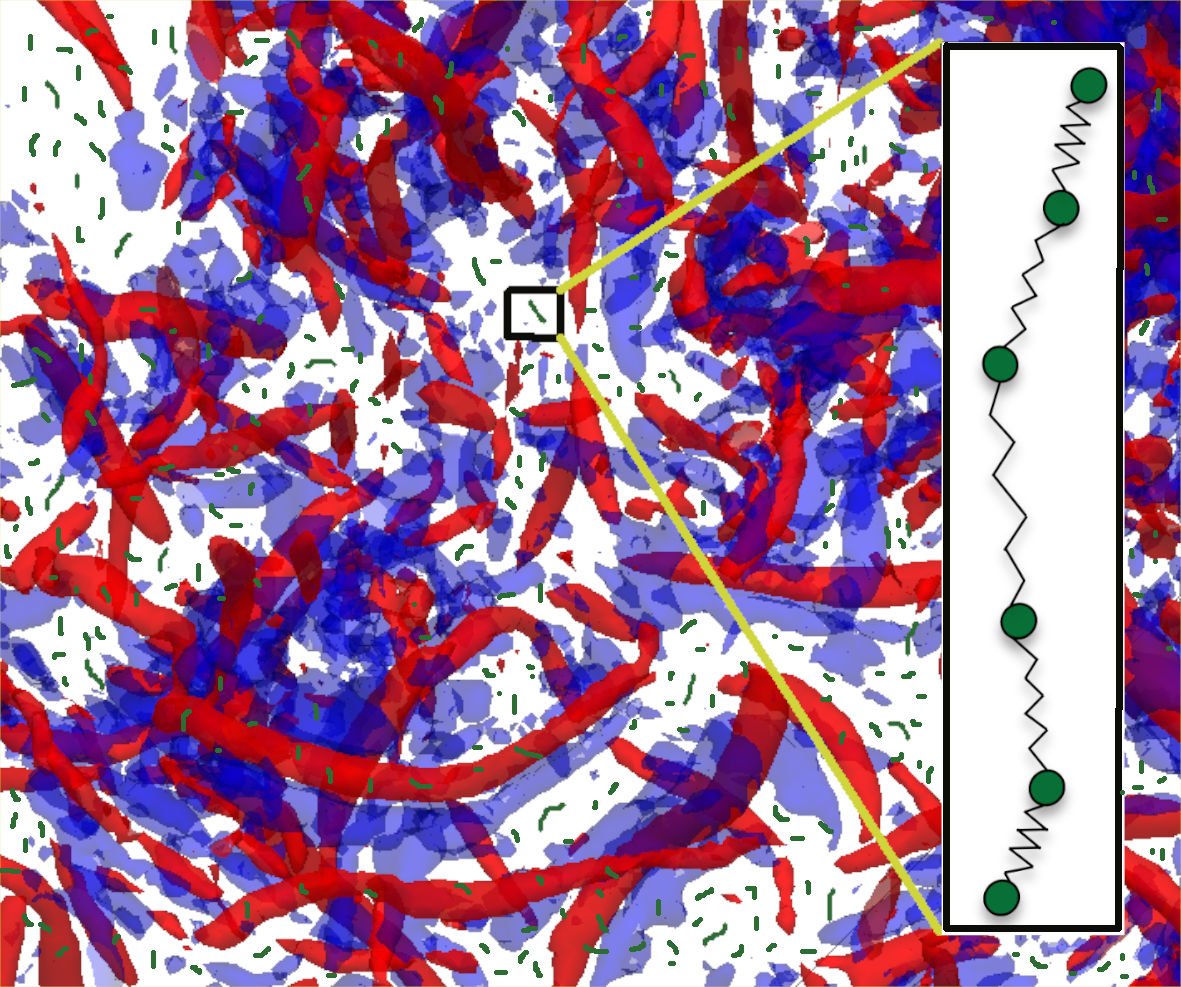Multiscale CFD simulations of viscoelastic turbulence

With modern-day computers and several open-source CFD packages, it is today quite straightforward to simulate Newtonian flows. Even for turbulent flows, several well-tested and efficient algorithms are available, so that reasonably high-Re Newtonian turbulence can be simulated on a personal laptop. The situation is dramatically different for Non-Newtonian flows, however, and their accurate simulation, especially in turbulent settings, remains an outstanding challenge.
A major reason for this is that the governing equations for Non-Newtonian fluids are unknown. One important example of such a complex, structured, Non-Newtonian fluid is a polymer solution. Dissolved polymers behave like nano-springs, which get stretched-out by fluid drag forces and then exert an equivalent feedback force when they relax and contract. This flow-polymer coupling acts across a wide range of scales, from nano/micro meters for the polymer to meters for the turbulent eddies. While modified versions of the Navier-Stokes equations (with viscoelastic stress tensors) have been proposed, their results agree only qualitatively with observations and are unable to reproduce experimental data. This is because the complex dynamics of the individual polymers cannot be described by simple, averaged, continuum-level equations.
Why is it important to accurately resolve this polymer-flow coupling? The reason is that adding polymers to a solvent produces dramatic departures from Newtonian behaviour, even for very dilute solutions---the drag of high-Re turbulent pipe flows is greatly reduced while low-Re laminar flows are excited into a chaotic state called elastic turbulence. These phenomena have applications in reducing energy losses in oil pipelines, and in enhancing mixing in microchannels and oil recovery from reservoirs, respectively.
In recent years a new, ambitious, and promising approach has emerged to simulate such structured fluids. The idea is to simulate the micro-scale dynamics of the polymer chains directly, and then couple information about their orientation and stretch to the Navier-Stokes equations in order to compute the macroscale flow of the solvent. This hybrid approach therefore combines two previously well-known techniques, namely Brownian dynamics (BD) and computational fluid dynamics (CFD), thereby enabling us to discover and explore new multi-scale phenomena and to better understand the physics of these complex flows.
We aim to devlop a hybrid BD + CFD code for solving the turbulent flow of dilute polymer solutions in simple 2D domains, as well as more realistic pipes and channels. With this advanced, state-of-the-art computational tool, we will then explore two oustanding puzzles in the field of turbulent polymer solutions: (1) Elastic instabilities and the transition to elastic turbulence, and (2) drag reduction and its loss due to polymer breakage or scission.
If you are interested in a long-term career in computational fluid dynamics and/or scientific computing, this project is for you. You will work in a very exciting area with research and commercial opportunities in India and across the world. It will provide you with deep knowledge and strong skills in fluid mechanics, meso-scale polymer dynamics, numerical methods, code development and data analysis.
Collaborators:
Dario Vincenzi, Univ. Cote D'Azur, Nice, France (https://math.unice.fr/~vincenzi/).
Prabhakar Ranganathan, Monash University, Australia (https://www.monash.edu/engineering/prabhakarranganathan)